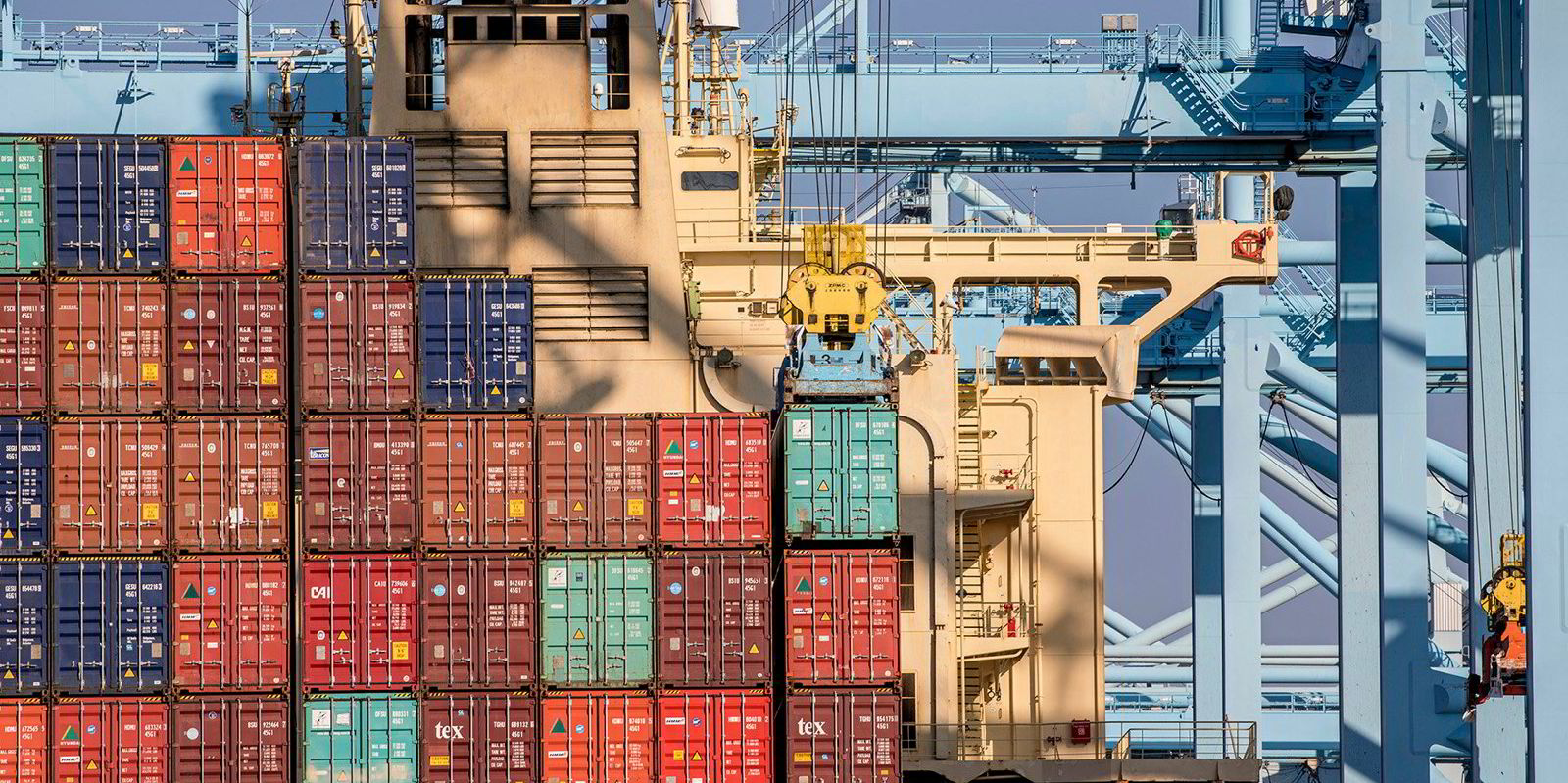Container freight contract negotiations on major east-west routes are in flux after spot rates dropped to their lowest level for several years.
Spot rates on the transpacific have fallen to levels last seen in 2016 — about 50% beneath the asking price for fixed-rate deals.
Freight rates from Asia to the US West Coast (USWC) were down to around $990 per 40-foot equivalent unit (feu) on 3 April, according to the Freightos Baltic Index.
That is roughly half the rate that carriers hope to secure this freight contracting season for 12-month contracts that normally take effect in the coming weeks.
Spot rates from Asia to the US East Coast (USEC) are about $1,000 less than carriers are reported to be indicating for fixed contracts. Rates from Asia to the USEC were just $2,085 per feu.
Sources citing US forwarder Freight Right suggested that carrier representatives have been hinting at $1,800 to $2,000 per feu for volumes from Asia to the USWC, and $3,000 to $3,200 for Asia to the USEC.
Improving sentiment could enable carriers to push through a mid-April rate increase on some key spot routes.
But the widening spread between spot and contract rates has led to delays involving signing contracts between large and midsize shippers.
Many contracts would typically be finalised by now ahead of the May start date, according to Freightos research head Judah Levine.
But with spot prices well below the level that carrier representatives are pitching for long-term rates — and still falling — this target is probably unrealistic to many shippers.
Hedge your bets
The largest importers — whose contracts generally determine the benchmark for other beneficial cargo owners each year — have yet to sign contracts that start in May.
Digital forwarder Flexport expects fixed rates to settle around 30% higher by mid-April than current floating rates.
It advises shippers to diversify across fixed and floating contracts, due to the uncertainty.
Other measures of freight rates suggest long-term contracts could go lower.

Global long-term rates fell for the seventh consecutive month, down 0.5% in March, according to Xeneta Shipping Index (XSI) — a drop of 24% from their peak in August 2022.
The March decline was far smaller than the 13.3% month-on-month collapse in January.
But Xeneta chief executive Patrik Berglund is forecasting greater pain for carriers when new contract negotiations for the US gather pace in April and May.
“The principal reason for the relatively small decline is a lack of new contracts entering validity, rather than any strengthening of fundamentals,” he said.
“The major tendering season in Europe has passed, whereas it’s looming large on the horizon for the US market. The prospects of carriers being able to maintain their current long-term rates here look slim, to say the least.
“We can expect to see some major falls and that will, we expect, drag the XSI down more sharply in the months to come.”
Hard negotiations
The global XSI remains a healthy 30.5% up year on year and carriers continue to make good money on containers tied to long-term contracts.
“However, looking at the hard negotiations that lie ahead, it’s very, very difficult to see how carriers can maintain that elevated level,” Berglund said.
“Unless something drastic happens, I think the long-term contracts in the second half of the year will look very different to those that were valid at the start of 2023.”
Whatever finally emerges in the talks, the long-term contract negotiations are taking place with more explicit recognition that contracts are “inherently flawed”, according to Levine.
If too large a share of volumes opt for the spot market over contracts, he argues that carriers will remove enough capacity to push rates up to profitable levels.
And shippers that sign contracts nearer today’s low rates may be at risk of seeing them get rolled for more lucrative spot containers if spot rates climb.




